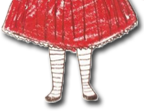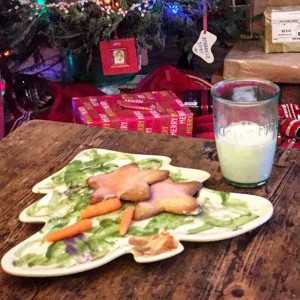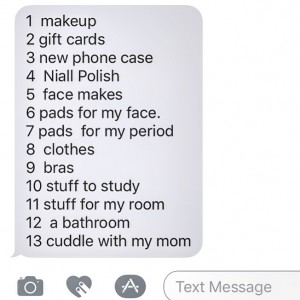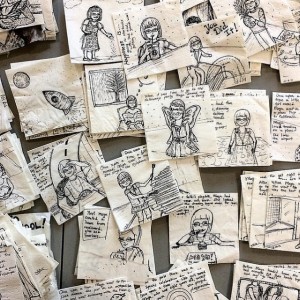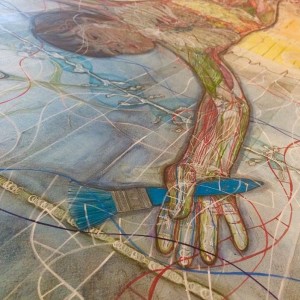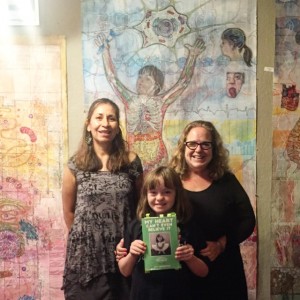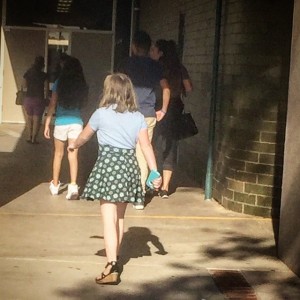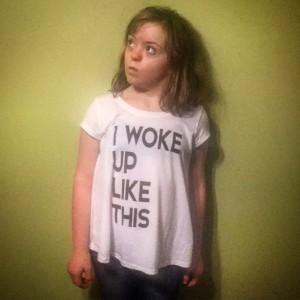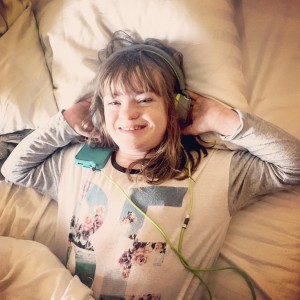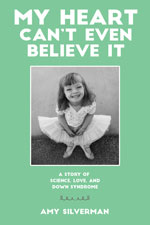
I decided to make a mix tape for Thanksgiving, a gratitude mix. I started off with “Thank You Friends” by Big Star and had every intention of including other simple expressions of thanks — a fun play list for cocktail hour tomorrow — when things went south.
Like, with the second song.
I landed on R.E.M.’s “It’s the End of the World As We Know It” and didn’t look back. Suddenly my mix was looking less like an appetizer and more like an apocalypse. By the time I was done, I’d run the gamut — thanks, doomsday, anthems, a few love songs, more doomsday, a few more love songs, some gloom, and finally a feeble attempt to return to the theme.
I looked at the list and realized it was a pretty good catalogue of 2016. It’s been a year, right?
Now I will make a confession that might make me wildly unpopular on social media as it stands today (which is to say, who knew the internet could get so hostile, particularly among likeminded friends?) but I’m going to say it.
It’s been the best year of my life.
In many important ways it’s been a shitty one, make no mistake. But one thing I’ve learned in my relative old age, in this, my 50th year, is that both things can exist at once. It can be the best year and a shitty year.
The other night I crawled into bed after looking at Facebook for too long (as in, more than 15 seconds) and tried to breath. I feel like if I don’t focus on this scrolling, constantly refreshing real-life horror story, don’t really take the concerns seriously, that somehow the worst case scenarios will come to pass — sort of how I feel like I need to concentrate hard when the plane is taking off, clutching the arm rest, focusing all my energy to make sure that plane stays in the air, that it keeps pointing up.
Because I have no idea how the plane stays in the air.
Or how we do. How do we stay in the air? Not by looking at Facebook, not now.
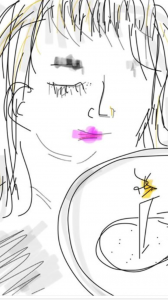
And yet Facebook is where, a few years ago, I met Heather Rowe. The other day I posted a photo of Sophie on her half birthday (she demanded a candle in her buttered crumpet and actually allowed me to snap a picture) and Heather — who lives on the other side of the country, also has a kid with Down syndrome, and is struggling like the rest of us to figure out what to do and think and be these days — posted a portrait of Sophie. She drew it on her iPhone, she’s been posting these images, she calls it #arttherapy.
I won’t stop looking at Facebook, I won’t stop posting, I will send Heather a copy of my gratitude mix.
This year has been tough, and not just because of Donald Trump. I’ve had some really serious work challenges that have forced me to act like a grown up, and I hate acting like a grown up. Sophie is sitting on the precipice of high school — an empty pool we’re about to dive in, with testing (or the eschewing of), tours, and lots of tough questions. I feel the weight of that on me like a rock on my forehead, boring down on my eye sockets. I feel the security we worked so hard for in junior high ready to slip away, feel things about to get harder and harder and harder for Sophie.
Then there’s my sweet, wise, beautiful Annabelle, who was diagnosed this year with juvenile arthritis. She’s okay (knock on wood — hard) but it was a terrible summer, the worst. I watched my girl respond with more grace and maturity than I could ever have imagined. Early on Election Night, before the returns came in, I watched her perform in a school recital, dancing on pointe for the first time since her diagnosis. It was one of the bravest, best things I’ve seen in my life.
The next morning she stumbled out of her room, looked at my panicked face, and asked, “Mom, is Donald Trump president?”
So yeah, 2016 has been a mixed bag. And then there have been the joy-soaked moments, big and small. We did some remodeling and I NOW HAVE A LAUNDRY ROOM. My oldest, dearest friend and I went to Cuba for a week; we took a family cruise to Canada; Annabelle and I snuck off together to Seattle for a weekend. Sophie cheered and acted and got a ukelele. I watched Annabelle perform her first gig (on the bass!) with her first band. Ray got really good tickets for Elvis Costello. I got to assign, edit and publish stories by some of my favorite writers in New Times, continue our beloved Bar Flies reading series, and co-taught Mothers Who Write for the fifteenth year. My best friends threw me the best party ever for my 50th birthday — complete with a cake walk. And in early November, we wrapped a year of study and preparation with a b’not mitzvah (that means for two girls) for Annabelle and Sophie that marked their coming of age (Sophie is super excited to be a WOMAN!) and included family and friends from near and far.
As I type this, the girls are sleeping at my mom’s house with their beloved cousins — my sister and her family are in town for the holiday — and I’m sitting at my laptop at the kitchen table with a Momofuku-inspired pork roasting in the oven. Ray is sitting here with me, practicing Christmas songs on his acoustic guitar. There’s a standard poodle at my feet.
I am so spoiled, so humbled, so grateful. And a little exhausted.
I wrote a book, and it was published this year. No, it’s not a bestseller (except for about 30 seconds in an obscure category on Amazon) but it’s been well-received. The outpouring of support and love from friends, family, strangers, journalists, and members of the Down syndrome community — a community where I finally feel I really belong — has been more than I ever could have hoped for. I have made meaningful connections with writers and families. Most important to me, the person to whom the book is dedicated — Ray — says he loved the book. And he doesn’t lie, he doesn’t even fib. As I enter the second half of my century, I feel like I have a foundation, both personally and professionally.
I feel like the Grinch — my heart has grown three sizes this year. Even Donald Trump can’t stop that.
In my mid-40s, I made a list of 50 Things to Do Before I Turn 50. I got to 31 or 32, depending on how you look at it, so more than half — meh. But I feel like this year, I finally nailed the last one:
Live in the moment.
More than anything, I’m today to here to say that I’m grateful for you. Thank you for reading this little blog, for being with me in the moment. Have a wonderful Thanksgiving feast tomorrow and if you’re worried about disparate views, make my mix (or, better yet, your own!) and blast it right over your guests. You’re welcome.
Amy’s 2016 Gratitude Mix
Thank You Friends * Big Star
It’s the End of the World As We Know It (And I Feel Fine) * R.E.M.
Waiting For The End Of The World * Elvis Costello
Water Fountain * Tune-Yards
Our House * Madness
Race for the Prize * The Flaming Lips
Hallelujah * Leonard Cohen
Rise Up * Andra Day
Brave * Sara Bareilles
Firework * Katy Perry
Seventeen * Sjowgren
Grow * Frances
Not Today * twenty one pilots
Strawberries * Why?
For Once in My Life * Stevie Wonder
My Love * Paul McCartney & Wings
And So It Goes * Billy Joel
Over the Rainbow * Ingrid Michaelson
Thanksgiving Theme * Vince Guaraldi Trio


